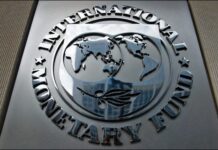BAKU: The world’s top multilateral banks pledged to ramp up climate finance to low- and middle-income countries to $120 billion a year by 2030 as part of efforts at global talks in Azerbaijan to agree on an ambitious annual target.
Reaffirming a goal of capping global warming at 1.5 degrees Celsius (2.7 degrees Fahrenheit) above the pre-industrial average by 2050, the new figure is a more than 60% increase on what the group of 10 multilateral development banks had funnelled to poorer nations last year, according to a statement released during the U.N. climate summit in Azerbaijan’s capital Baku.
The new figure includes $42 billion to help adapt to the impacts of extreme weather, a 70% increase over the 2023 number.
With the U.S. government under Donald Trump expected to pull back from global efforts to fight climate change and many other countries cutting development aid, more emphasis is being placed on helping the private sector increase its funding for climate.
“MDB finance is most needed for the poorer countries, as wealthier governments can typically access cheap debt more easily,” said Clare Shakya, global managing director of climate from the Nature Conservancy.
Going forward, the group of MDBs, including the World Bank, European Investment Bank and Asian Development Bank, said they would aim for their lending to bring in an additional $65 billion in private-sector cash.
“While the scale of MDBs’ financial commitments is essential, MDBs’ most significant impact comes from our ability to drive transformative change,” the group said in a statement.
World Bank President Ajay Banga said during a panel discussion in Baku that trillions of dollars would have to come from the private sector, adding he expected that annual private-sector tally would exceed the $65-billion target.
Nadia Calvino, president of the European Investment Bank, said the private sector was becoming increasingly engaged as it became clear that the cost of climate change was unaffordable.
“We can spend time just discussing issues, but I think it’s better to get on with it and … work as best as possible, together to mobilize green finance, public and private finance, and have maximum impact on the ground,” she said at the meeting.
However, the group warned their ability to do more largely depended on the commitment of banks’ shareholders from both developed and developing countries, who needed to show “greater ambition”.
“Provision of climate finance at scale also depends on increased MDB internal resources; a larger pool of grant and concessional funds to support enhanced policy dialogue, finance public goods and mobilize private finance; and additional capital to unlock more MDB financing,” the statement said.
“We welcome the ambition set out today by the multilateral development banks, which played a key role in scaling up climate finance to exceed the $100 billion goal,” a U.S. official, who declined to be named, said on the sidelines of the gathering.
























